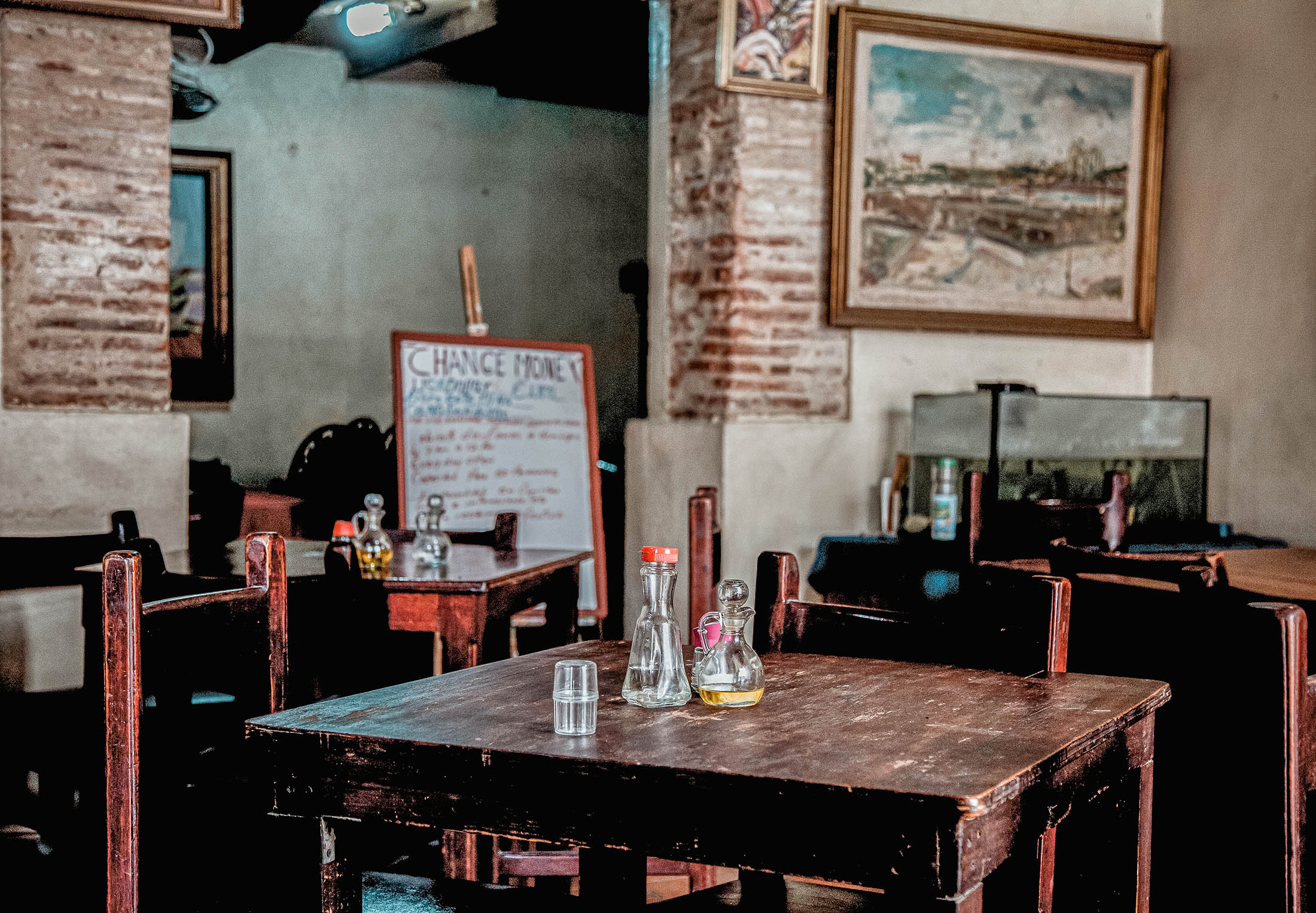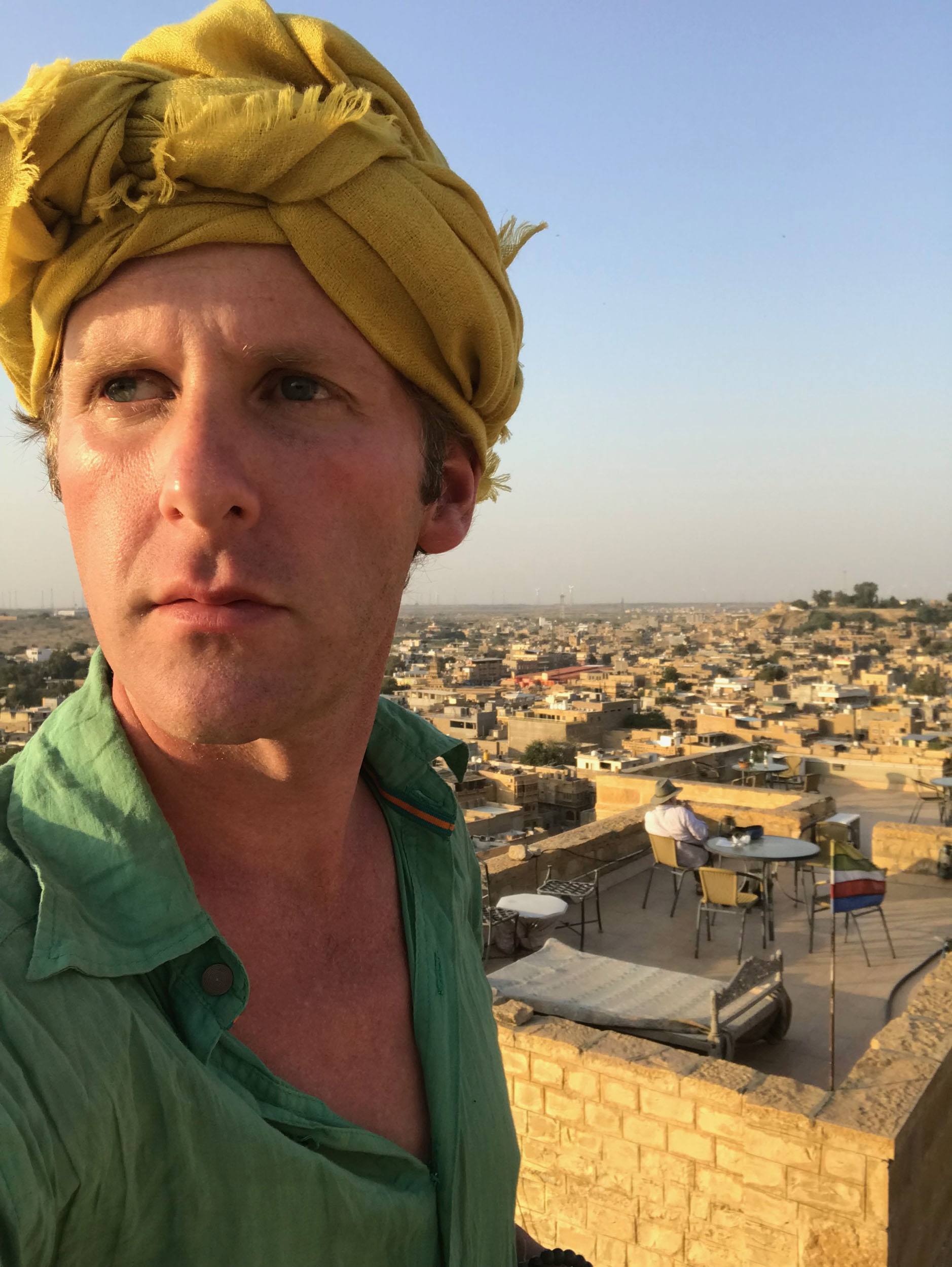Perhaps the most diverse of the Caribbean Islands, the Dominican Republic (the island split in half and shared with Haiti) may not be what you’d expect: limited not to palm-fringed white-sandy beaches that continually entice, there are other delights including fertile interiors (complete with vistas akin to the European Alps), swathes of lush jungle, jaw-dropping waterfalls and arid semi-desert plains.
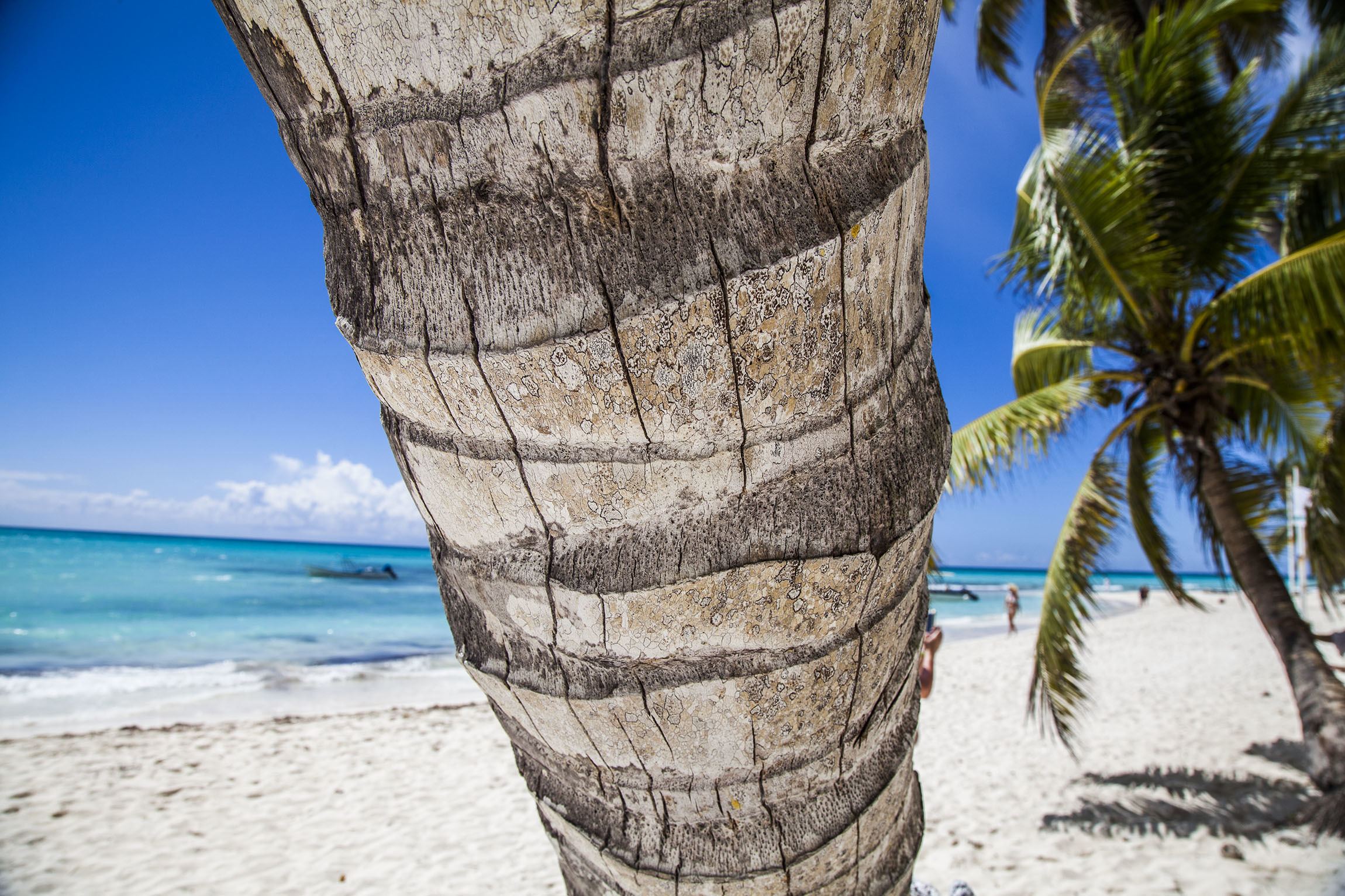
If you're after cultural enlightenment, then step into a colmado and dance the merengue until the early hours.
There’s something for every taste (and a lot more going on than meets the eye).
Take your time (unlike me) and let the Caribbean vibes of the DR get under your skin.
I only spent 10 days on the island, much less time than I’d have liked (but my sister was getting married in Australia and I don’t think she’d have forgiven me had I skipped the wedding).
There's a lot of diversity throughout the island, so I’d recommend planning to stay at least two weeks, to get a feel for the country without having to rush.
Solo Travel Note on Visiting the Dominican Republic
On this 10-day trip, I was blessed to be joined by an Australian-El Salvadorian friend. It’s rare I plan a trip with another traveller - solo travel has been my gig since I was 18.
Sofia, like me, is easy-going and spontaneous, key assets to a fruitful journey-in-two. She, too, has travelled solo most of her adult life, so the union of two similar styles was a recipe for success.
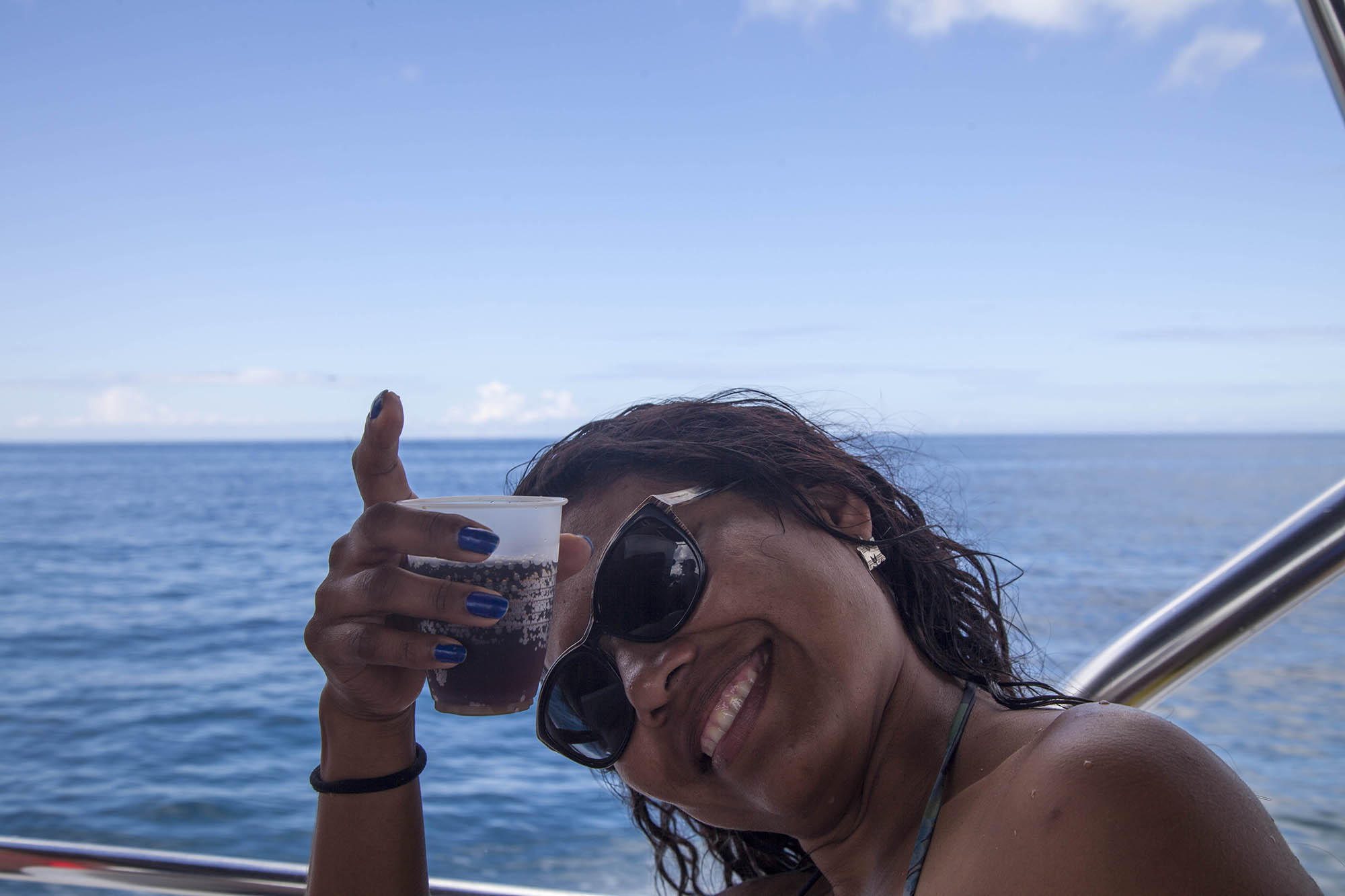
We understood the requirements of one another and did our best to ensure each had their travel needs met.
It was a pleasure to be joined by a friend for the trip (something that's probably uncommon to hear from a solo traveller). And Sofia’s Spanish is much better than mine, which was a godsend in the DR.
We met and joined forces with Eva, another solo traveller, from Spain.

The moral of the story?
If you are visiting the DR on your own, you’ll likely encounter others doing the same. It’s a safe and easy enough place to travel alone (especially if you have sufficient time) but don't shy away from joining forces.
Knowing basic Spanish will help you tremendously.
Here are the places Sofia and I visited (in places with Eva), in the sequence travelled.
SANTO DOMINGO
Stay within the confines of the Zona Colonial, and it’s hard to place yourself in the Caribbean, at least not the variation most have in mind. With a spattering of churches, the oldest surviving fortress and the emergence of new and expensive restaurants and cafes, there’s a distinct feel of the continent.
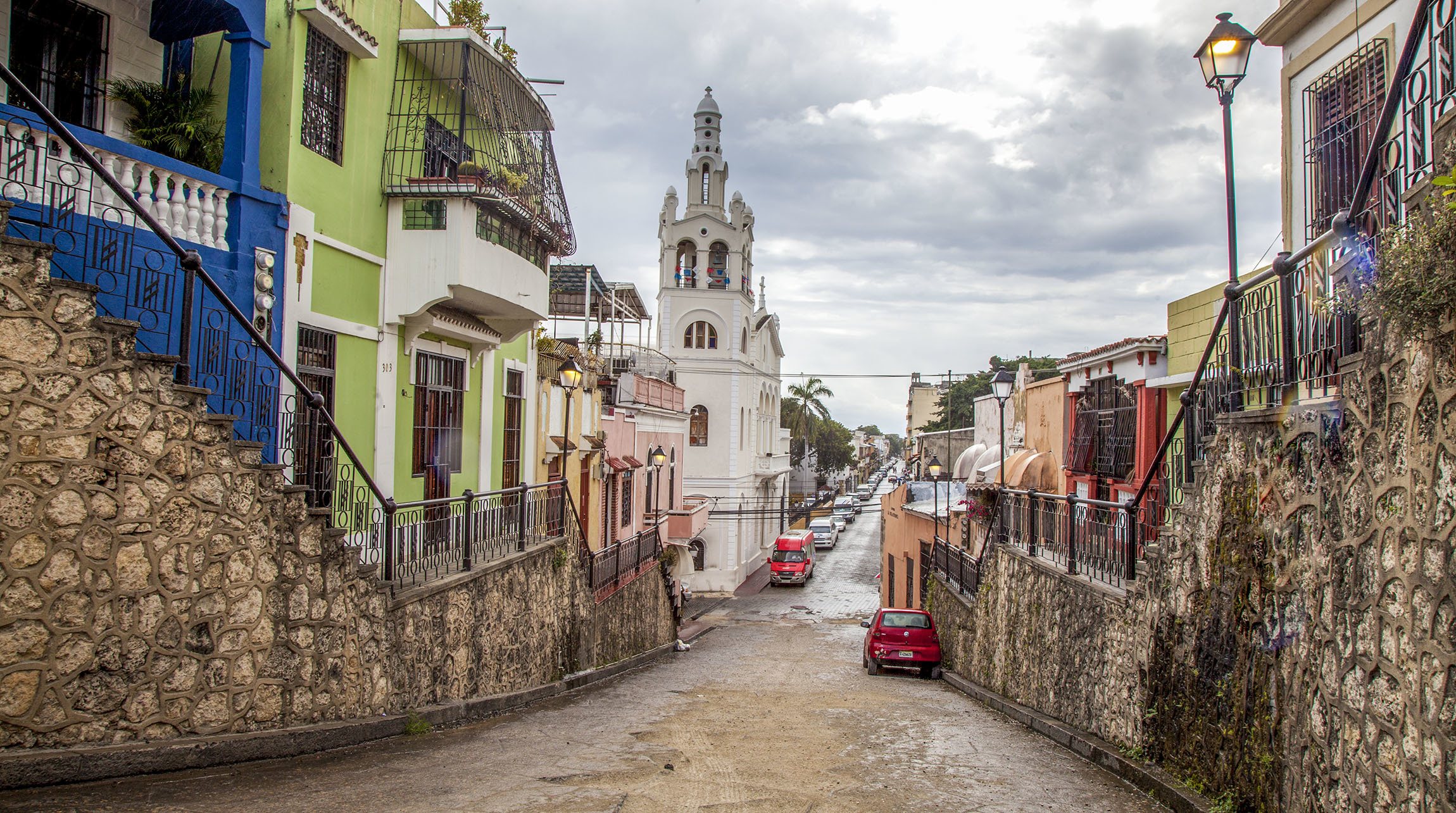
Step foot outside the well-established manicured zone, and the patch-worked landscape of people, culture and architecture evolves. Sounds of the Republic intensify, with cars backfiring in dense traffic, mixed intonation Spanish jumbling off the tongues of new Haitian arrivals, and merengue music blaring from corner stores. And so do the colours, of the walls and doors, the bodies, and the beautiful faces.

Santo Domingo is an urban sprawl, confines of which are not limited to the colonial zone (the part of town to which most travellers cling). Get outside its borders even momentarily – before darkness falls – and embrace the city’s wider appeal.

It’s in Santo Domingo that most travellers, including Sofia and I, arrive and kick off exploration of the island’s farthest reaches.
However, before speeding down the highway in search of waterfalls and mountains, ensure you stick around La Capital for a day or two and visit a handful of the sites listed below.
Try and time your stay around a Sunday. It’s when the streets by the monastery come to life.
The Malecón and Avenida George Washington
The famous waterfront promenade of the capital is a lengthy thoroughfare that starts from the mouth of Río Ozama within Zona Colonial and extends beyond the famed district.
It’s perhaps best enjoyed on Sundays when cars are banned, making it pedestrian-only, and a pleasant wander alongside the Caribbean waters that lap the shores.
It's not as well-kept as it could be, sadly, but it paints a diverse picture of the Caribbean capital to its colonial roots.

Dotted with several restaurants, there are plenty of places to dine and enjoy sunset (Adrian’s Restaurant being one I recommend).
Barrio Chino (Chinatown)
For a variant picture to the Colonial Zone, take a walk through Barrio Chino, known in English as Chinatown.
North of the Colonial Zone at the converge of Avenida Duarte, Avenida Mexico, Jacinto de la Concha, Avenida Mella and Calle Jose Marti, is a little piece of the orient. The red gates mark your arrival, and the Chinese shops, restaurants and red lanterns denote the path.
It’s in this part of town and its surrounding neighbourhoods that Sofia and I noted a change in infrastructure, levels of social stratification and policing. It more closely resembles the developing Santo Domingo depiction I had in mind.
Whether you simply want to throw back a steaming bowl of wanton soup or gain a diverse perspective to the continental-like streets of the Colonial Zone, then I’d recommend wandering through Chinatown during daylight hours.
I was warned not to leave the fringes of La Zona Colonial after dark, as danger lurks in every shadow. We didn’t push the limits.
Zona Colonial y Ciudad Colonial (Colonial Zone)
There’s no missing the cobblestone streets, colonial architecture and colourful walls of the 5-kilometre square seaside zone. It’s the starting point for most visitors to Santo Domingo, and truly is the beating cultural heart of the city.
The oldest permanent European settlement in the Americas, it contains a high number of significant landmarks, making it the most heavily visited part of the city by foreign visitors. With only eleven blocks, it’s certainly possible to see all of the zone’s highlights in a day.
Here are a few worthy of your attention.
El Parque Independencia (Independence Park)
It’s at the border of Zona Colonial and is home to the mausoleum of the country’s founding fathers: Ramon Matias Mella; Juan Pablo Duarte; and Francisco del Rosario Sanchez.
Start your walking tour here to learn about the genesis of the Dominican Republic, which will give you a richer understanding of the sites to follow. Ensure you step inside the Tumba de los Padres (National Mausoleum): each marble covered tomb is topped with a statue of the patriots, a jingoistic nod to political origins.

Guarded by dapper men in uniform, raucous behaviour is not permitted. The guards are amenable to having their pictures snapped when asked, an opportunity I seized numerous times.


Take a breather (outside) and immerse yourself momentarily in the solitude before hitting the chaos of El Conde en route to Parque Colon.
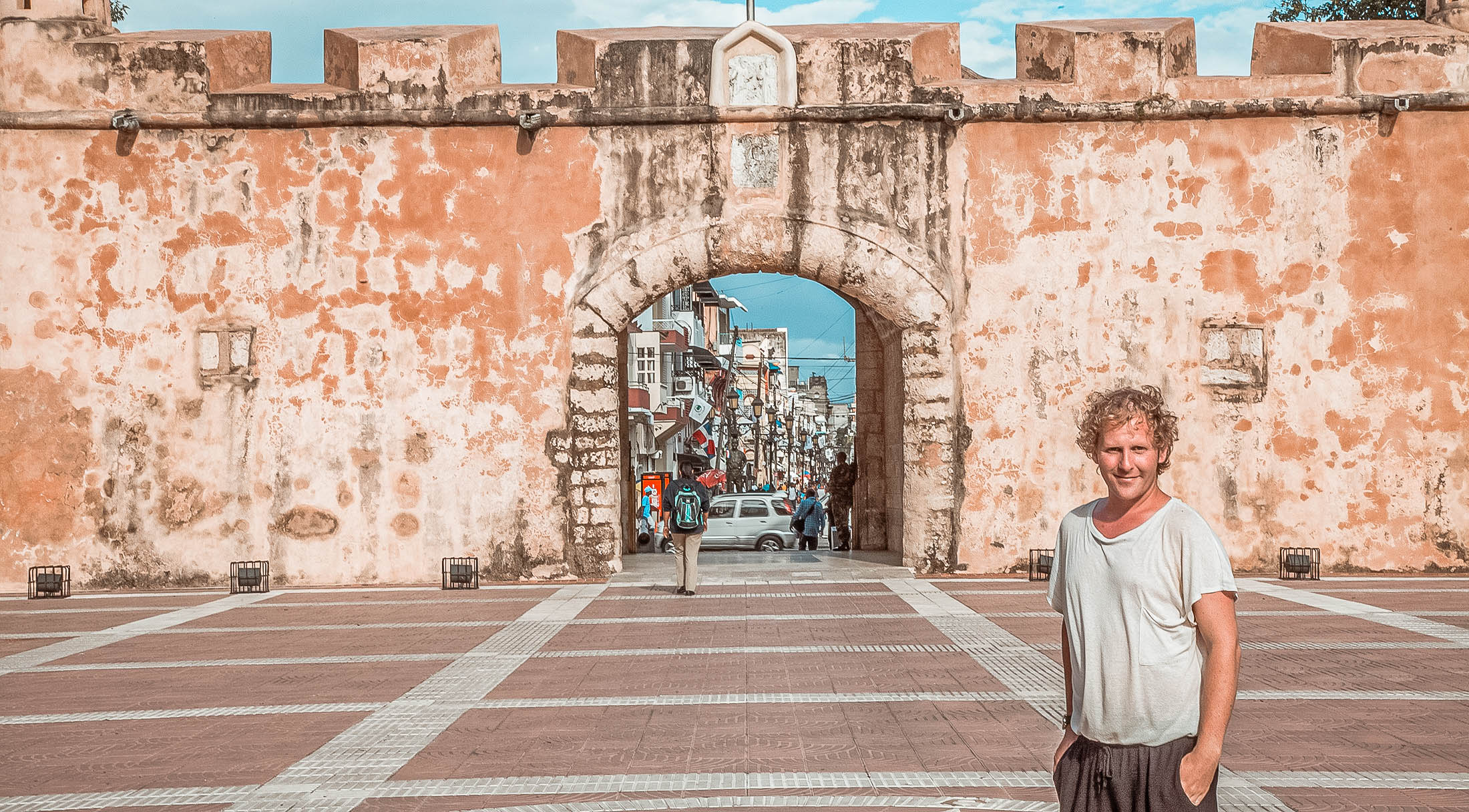
Entry to the park and mausoleum is free.
Calle El Conde (El Conde Street)
The main thoroughfare splicing the Colonial Zone in two, El Conde (also “de la Carnicería”, “Navarijo” or any of the other designations it’s had throughout history) is one of the first streets built in the Americas by Europeans.
Peppered with buildings of nobility, antique structures and recent reconstructions, it’s the main artery to the zone’s beating historical heart, each street off El Conde a micro-vessel leading to alternative sites of interest.

A meander along its length is appreciating the living showcase of Santo Domingo through history.
Nowadays, it’s a commercial hub dedicated (in part) to tourism as well as showcasing a spattering of nostalgia and coffee shops which celebrate the era of Spanish immigration.
Take your time, grab a hot beverage and indulge as you watch the crucible of the city’s life unfold.
Parque Colon (Colon Park)
Almost at the opposite end of El Conde to Parque Independencia (or at least the Puerta del Conde) is Parque Colon.
It’s perhaps the historical core of the city, and is home to some noteworthy landmarks: Palacio Borgella; Santo Domingo's Municipal Palace; Catedral de Santa Maria la Menor; and the bust of Christopher Columbus.
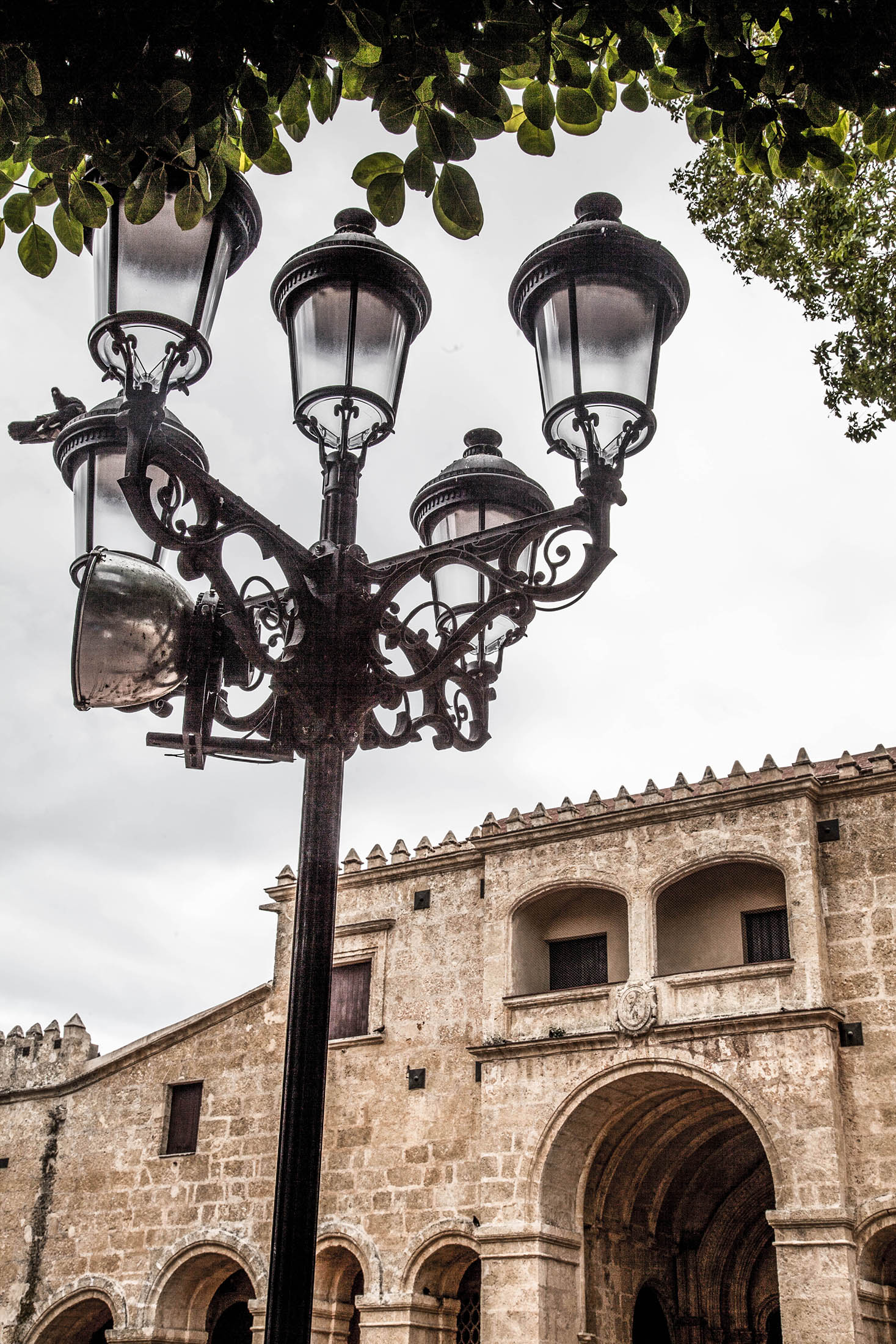
It’s also a point of congregation, for wining and dining, playing, and enjoying the unhurried pace of life. I took a seat in the shade of an old tree, and watched children run free with their parents nearby, old men smoke, drink and play card games, and tourists snap shots of various park features.
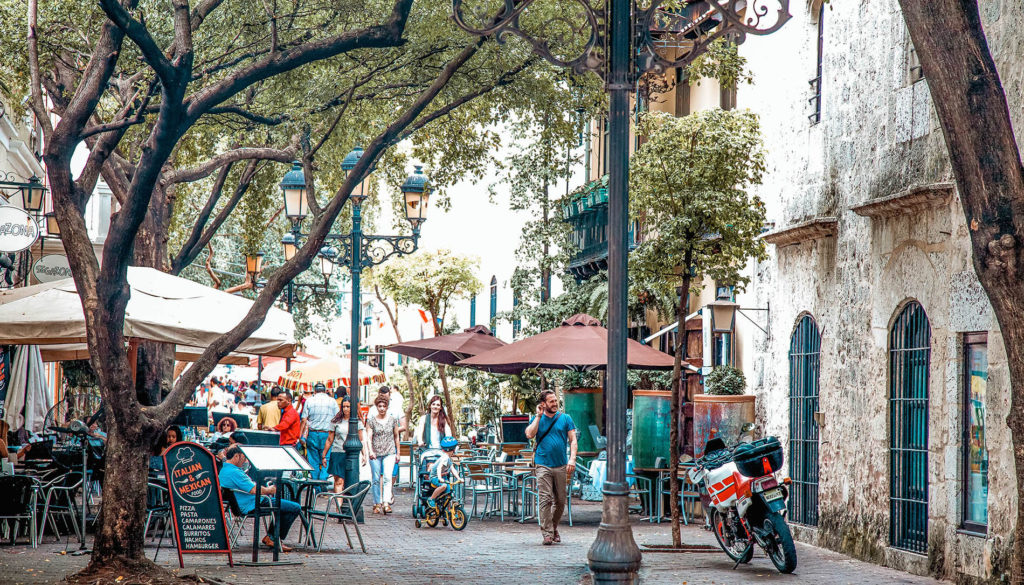

Buy a coconut from one of the street vendors before moving on to the Fort.

Fortaleza Ozama (Ozama Fort/Fortress)
Constructed between 1502 and 1507, unsurprisingly, it’s the oldest European military construction in the Americas.
Sitting high on the banks at the mouth of the Ozama River (after which it was named), the functional medieval ensemble served as a formidable defence against seaborne British, French, Portuguese and pirate attacks on the city and its port. It was constructed so well that it was used as a prison until the 60s, after which its gates opened to the public. It has since been deemed a World Heritage Site by UNESCO.
It is located at the end of Calle Las Damas (Las Damas Street), a three-minute walk south-east of Parque Colon, and is open Tuesday through Sunday from nine am to five pm.
Panteon Nacional (National Pantheon of the Dominican Republic)
An impressive structure of neoclassical-renaissance style, the pantheon was built in the 18th century by a Jesuit Spaniard, original purpose: a church.
It has since been used varyingly, as a government office, a theatre and even a place to store tobacco.
Under the order of dictator Trijillo, it was renovated in the 50s to serve as a mausoleum. It’s now the burial place of several notables, including dictator Rafael Leónidas Trujillo Molina himself.
The building, both inside and out, is a striking piece of architecture, admiration alone worthy of a stop en route to Plaza Espana.
The small plaza beside the Pantheon, part of which I assume belongs to the building, is often home to pop-up markets. I think I spent more time at the markets than I did inside the Pantheon, but both are interesting attractions.
It’s a three-minute walk north of Fortaleza Ozama.
Museo de las Casas Reales (Museum of the Royal Houses)
At the end of Calle Las Damas is the 16th century museum built originally under the order of King Ferdinand.
The Renaissance-style palace, now a museum, originally housed the government offices of the Spanish colonies throughout the Americas. It’s a showcase of the customs and life of Spanish colonisation in the Dominican Republic.

On display are colonial-era artefacts, including antique weaponry, period furniture and treasure recovered from galleons that sunk. The building is another nod to the architectural finesse of the colony’s designers.
Overlooking the river Ozama, it’s a fine spot for an ice cream bought from the vendor who often sits outside the entrance.

The admission price includes an audioguide in various languages, English being the one I chose.
Plaza España (Spain Square)
A few steps north of Museo de las Casas Reales is a large, open area fringed by restaurants and home to Alcázar de Colón (another museum).
It’s a great place to grab a bite to eat or, perhaps better, to throw back a drink at an outdoor table around sunset.
Alternatively, at night it is well lit and refreshment is achieved by the tropical breeze that sweeps through the square from sea via the river.
Monasterio de San Francisco (San Francisco Monastery)
An ecclesiastical ruin by day and fiesta by night, the monastery is a must-see Santo Domingo site.
As far as history goes, it was the first monastery in the New World. Build in the 16th century, it was used as a base for the Franciscan friars who evangelised the Dominican Republic. Destroyed by invaders, flattened by earthquakes and rebuilt several times, it was finally left in its ravaged state in the 1930s following a devastating hurricane.
Ambling through the ruins is best done in the morning when it’s free of other explorers.
For an opportunity to experience a livelier side of the city, a Sunday night visit is paramount. As the sun sets on the ruins, the surrounding area erupts into a flurry of movement of colour, as bachata and merengue dancers pulsate rhythmically across the dance floor.
Grab a beer for 150 pesos from the bar at the side, take a seat on the hill and watch as the experts strut their stuff. Better still, grab a partner and join in, showing off your expert merengue moves.
The concert is free and is a Santo Domingo must. It was perhaps the most entertainment I had while visiting the city.
Calle Restauración
Technically outside the colonial centre but skirting its fringes is Calle Restauración.
For colourful-wall aficionados, this little tiled and painted treasure at the street’s end is going to titillate.

There are many colourful walls throughout Zona Colonial, like the turquoise and yellow Calle Jose Reyes. So getting around on foot is best for appreciating these beautiful pieces of street art.
Staying in Santo Domingo - RECOMMENDED LENGTH OF STAY
Staying in Santo Domingo - ACCOMMODATION
Eating in Santo Domingo - RESTAURANTS
Getting around Santo Domingo - TRANSPORTATION
Getting to Santo Domingo - TRANSPORTATION
JARABACOA
The opposite to the idea of the Caribbean paradise-seekers have in mind, Jarabacoa (nestled in the foothills of surrounding mountains at the heart of the island) maintains a laidback, bucolic charm.
It’s here that rivers wind around heavily forested mountain-slopes, adventure-seekers canyon, bike, hike and raft, and affluent Dominicans come to spend the weekend. It’s also in Jaraboacoa that Sofia and I escaped the bustle of Santo Domingo and got back to basics, hiking, walking, waterfall-chasing and appreciating some of nature’s finer features.
Jarabacoa is a town near the Cordillera Central, the mountain range that stretches from a point west of Santo Domingo to the border with Haiti. Dotted with several peaks, one of which stretches heavenward to 3175 metres, it’s structurally complex and filled with diversity. Settlements are sparse; it’s not a place you visit if you don’t enjoy being immersed in nature.
We based ourselves at Jarabacoa Mountain Hostel, a moderate hike out of town. However, the core of the town is home to a few other accommodation offerings.
Aside from the adventure-laden sports mentioned above, the key natural sights are listed below.
Salto de Jimenoa Uno (Waterfall)
Following a muddy descent through dense shrubbery deep into a canyon, the 35-metre high beauty emerges.


Discovered fortuitously by English construction workers (building a hydroelectric facility nearby) in the early 20th century, it’s one of the most heavily visited natural sights in the region. It’s visually impressive, even if the water – at the time of our visit – is a tint of brown. The serenity of sitting completely surrounded by Mother Nature was unbeatable.
There is a small fee to pay at the entrance, before descending the gravel path. There is a Salto de Jimenoa Dos (separate to Salto de Jimenoa Uno).

Sofia and I were both on small budgets, independently backpacking our way around the world. We didn’t have enough means to hire a car for 10-days so in Jarabacoa, we decided to hire a driver for the better part of a day to get to both the waterfalls listed here.
It would be difficult to get to the waterfalls using only public transport; it doesn’t seem to exist. You could, perhaps, hire a bicycle but plenty of time and energy would be needed.
Salto de Baiguate (Waterfall)
Visually less impressive than Jimenoa Uno, it’s still a worthwhile trek and, unlike the other waterfalls, is fit for swimming. It too is surrounded by a plush canyon, idyllic for immersing yourself in nature.

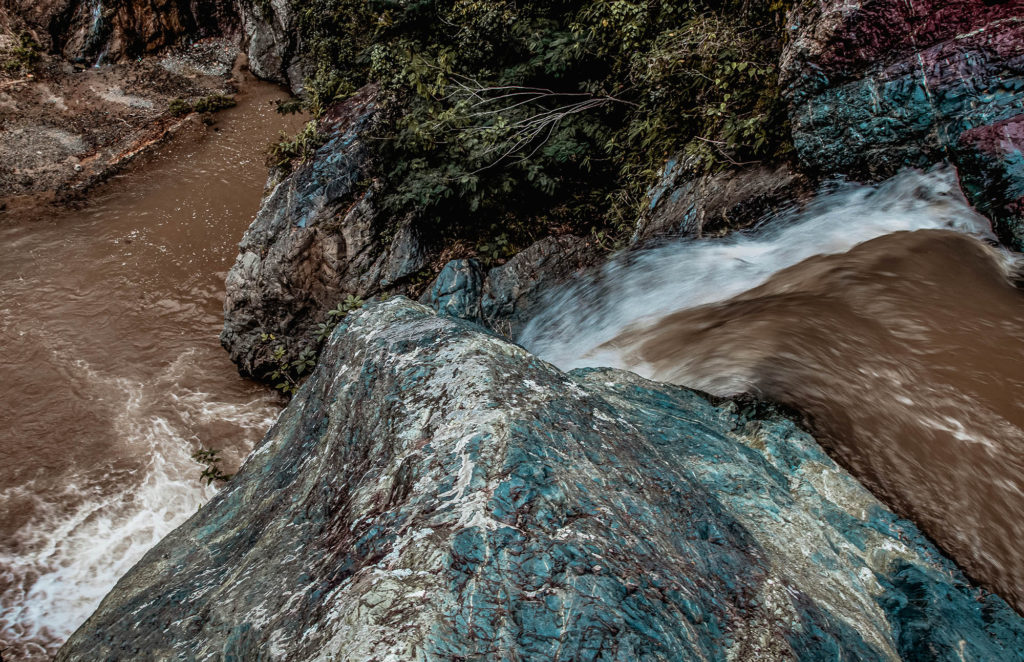
It’s a 300-metre walk to the waterfall from the car park.
We chose not to swim, but the water (in person) seemed a little clearer and cleaner than Jimenoa Uno.
Constanza
Allegedly the Switzerland of the Caribbean, a visit to the oldest and highest town of the Dominican Republic was non-negotiable. One-hour in a car south-west of Jarabacoa, the scenic drive took us through the winding roads of the Cordillera Central mountain range, revealing lush vegetation and stunning vistas.
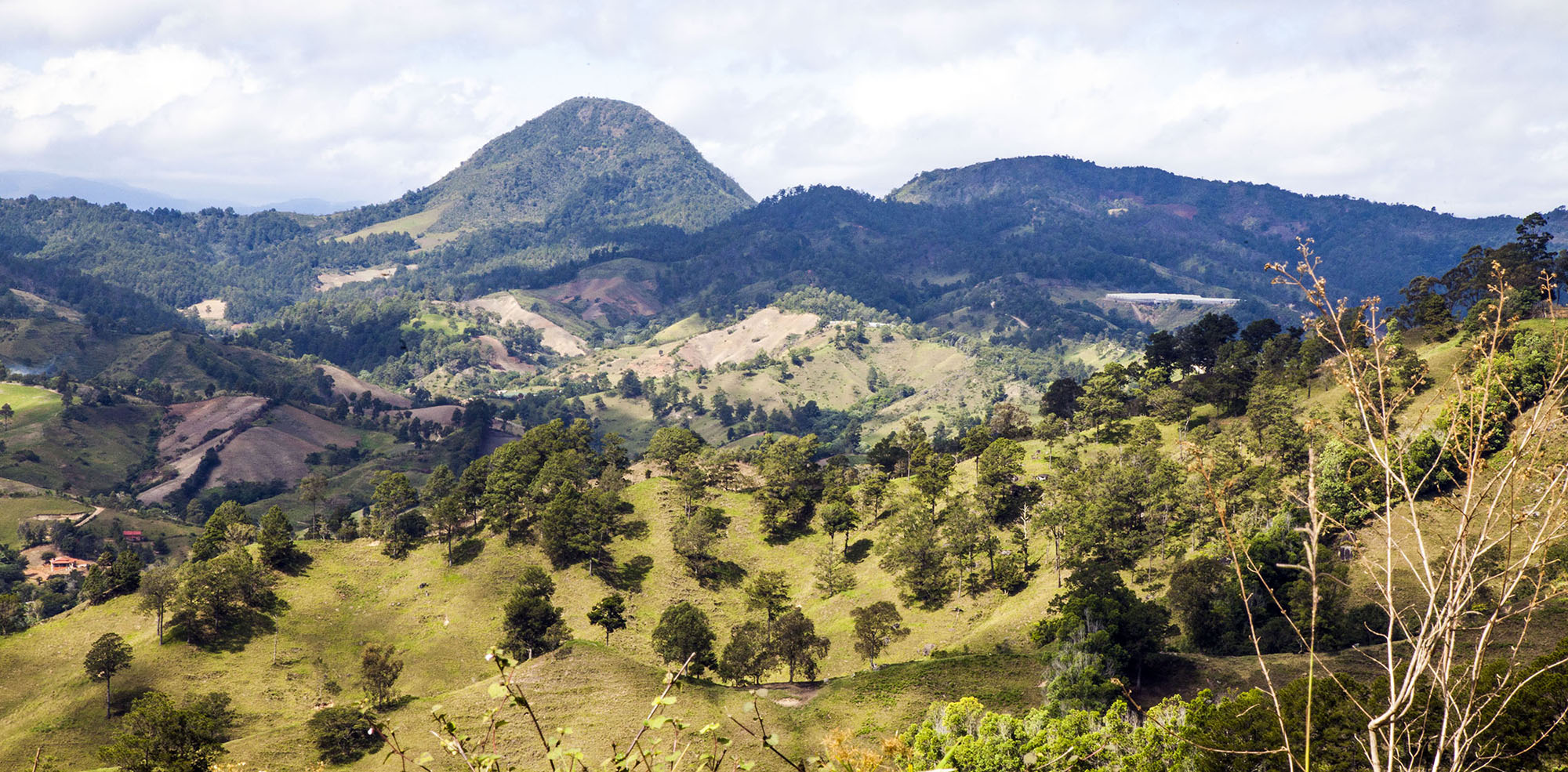
Once in Constanza, we were greeted by a cooler climate and a unique landscape of rolling hills, green pastures, and farmland.

The town is known for its agriculture and is a major producer of fruits, vegetables, and flowers for the country. You can visit a local farm to taste freshly harvested produce, and learn about the challenges and rewards of agriculture in the region.
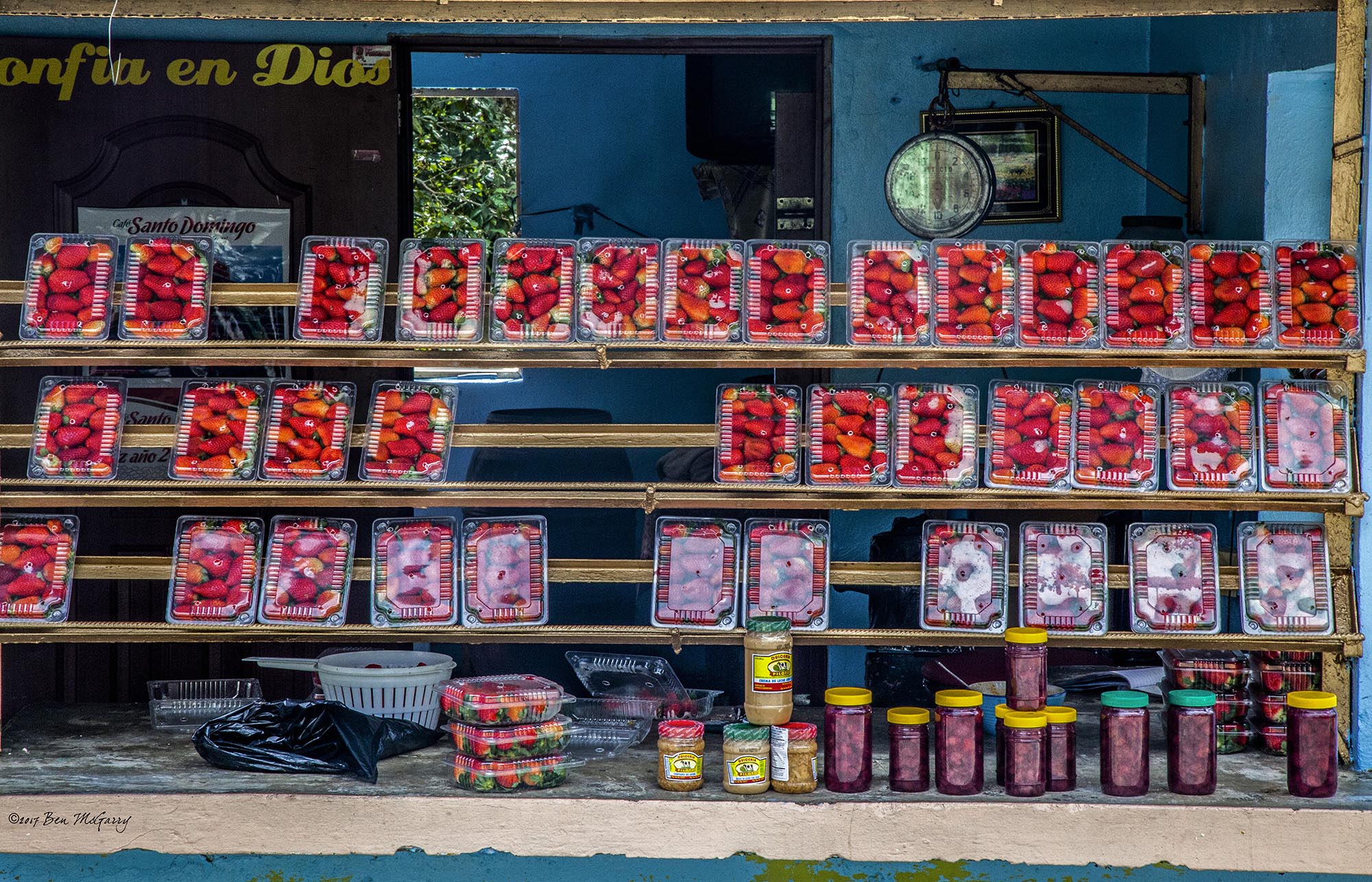

Constanza is also a great base for hiking, and exploring Pico Duarte (the highest peak in the Caribbean).
Towards the end of the visit, we were ready to refuel when we stumbled upon a popular local eatery. It was rice and beans for lunch which was simple yet satisfying.

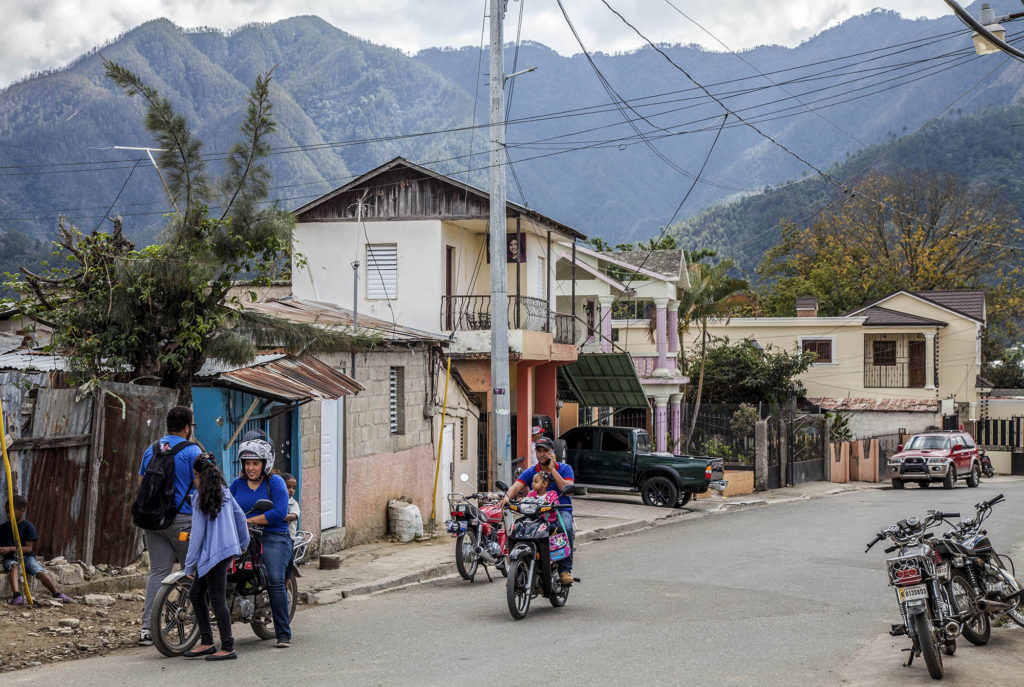
The lack of travellers (aside from our small group) made the experience feel authentic.
Staying in Jarabacoa - RECOMMENDED LENGTH OF STAY
Staying in Jarabacoa - ACCOMMODATION
Eating in Jarabacoa - RESTAURANTS
Getting Around Jarabacoa - TRANSPORTATION
Getting to Jarabacoa - TRANSPORTATION
LAS GALERAS
Located on the northeastern coast of the Dominican Republic, far from the bustle of Punta Cana's mega-resorts, lies the charming village of Las Galeras. This hidden gem is a perfect destination for those looking to experience a more laid-back and authentic side of the island.
While the town itself is small and unassuming, the surrounding area is breathtakingly beautiful. A winding coastal road takes visitors past lush forests and pristine beaches, with stunning views of the turquoise waters of the Caribbean Sea at every turn.

But it's not just the natural beauty that makes Las Galeras a must-visit destination. The village has managed to retain its traditional Dominican charm, with colourful wooden houses, bustling street markets, and friendly locals who are always happy to chat with visitors.
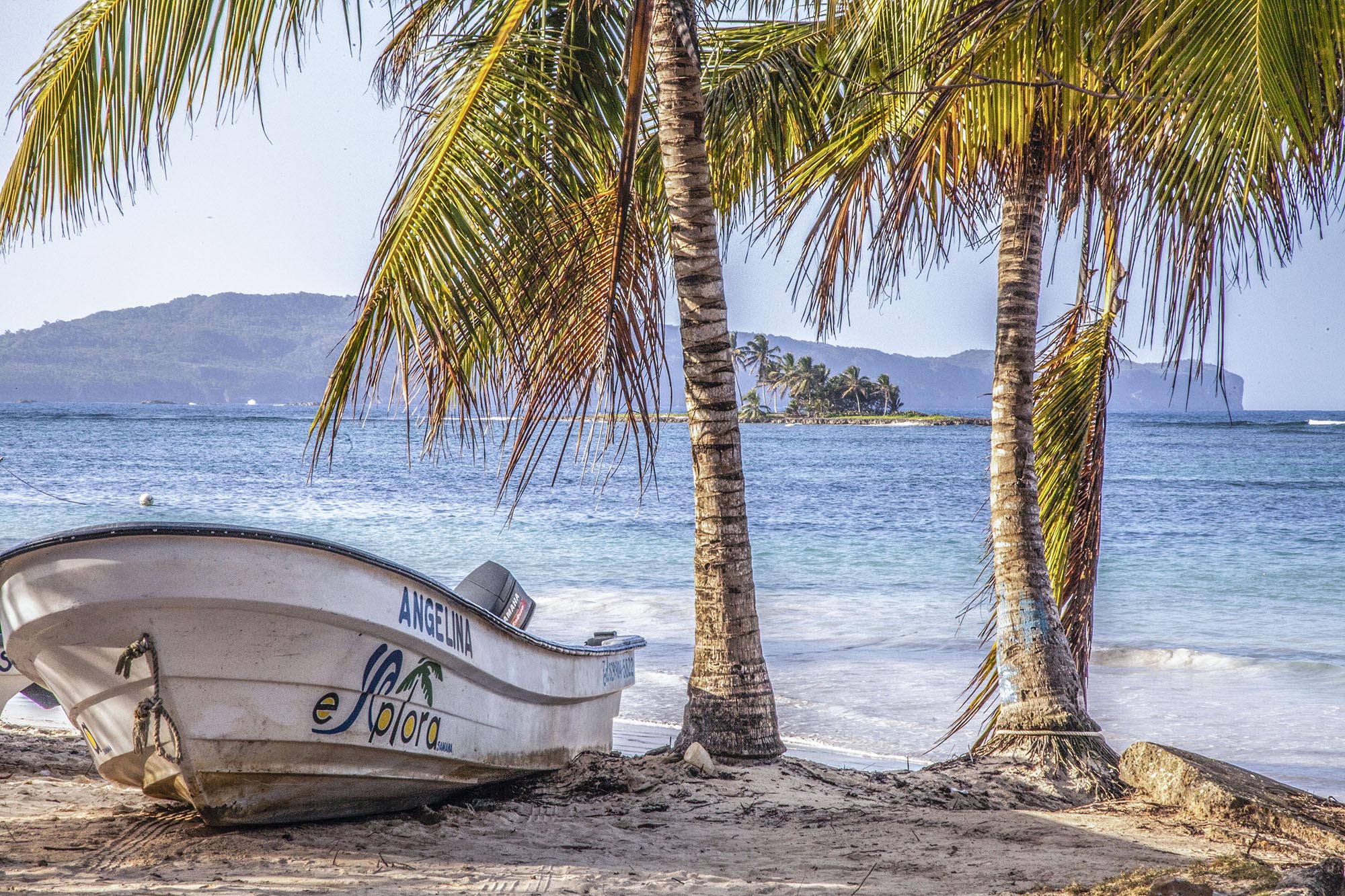
For those looking to escape the crowds and experience a slice of local life, Las Galeras is the perfect choice. Whether you're sipping a cold beer at a beachside bar, sampling freshly caught seafood at a local restaurant, or exploring the rugged coastline by boat, you're sure to fall in love with the relaxed and welcoming atmosphere of this hidden gem.
It was (and is) my favourite corner of the island!
Playa Las Galeras
The beach's crystal-clear turquoise waters and pristine white sands are just the beginning of its appeal.
With calm waters protected by a natural reef, Playa Las Galeras is an ideal spot for swimming, snorkelling, and diving. Fringed by palms and colourful, old wooden boats, we splashed in the balmy waters. The sand was clay-like, moulding into shapes under the pressure of our feet.

There are plenty of activities to keep you busy. Hiking trails offer stunning views of the surrounding hills and coastline, and horseback riding tours provide a unique way to explore the area's lush tropical landscapes. Rent a paddle board or kayak to explore the nearby mangrove forests and hidden coves.

Or simply have a quiet day on the beach. We spent some time relaxing under the shade of palm trees. You can rent a beach chair and enjoy the sound of the waves.
There are beachfront restaurants and bars - get yourself a refreshing drink or fresh seafood caught that same day.
Playa Fronton and Playa Madama
Picture this: you're cruising through crystal-clear waters, surrounded by towering cliffs and lush vegetation. Suddenly, you spot a majestic humpback whale breaching the surface of the ocean. You hold your breath in awe, then quickly grab your camera to capture the moment.

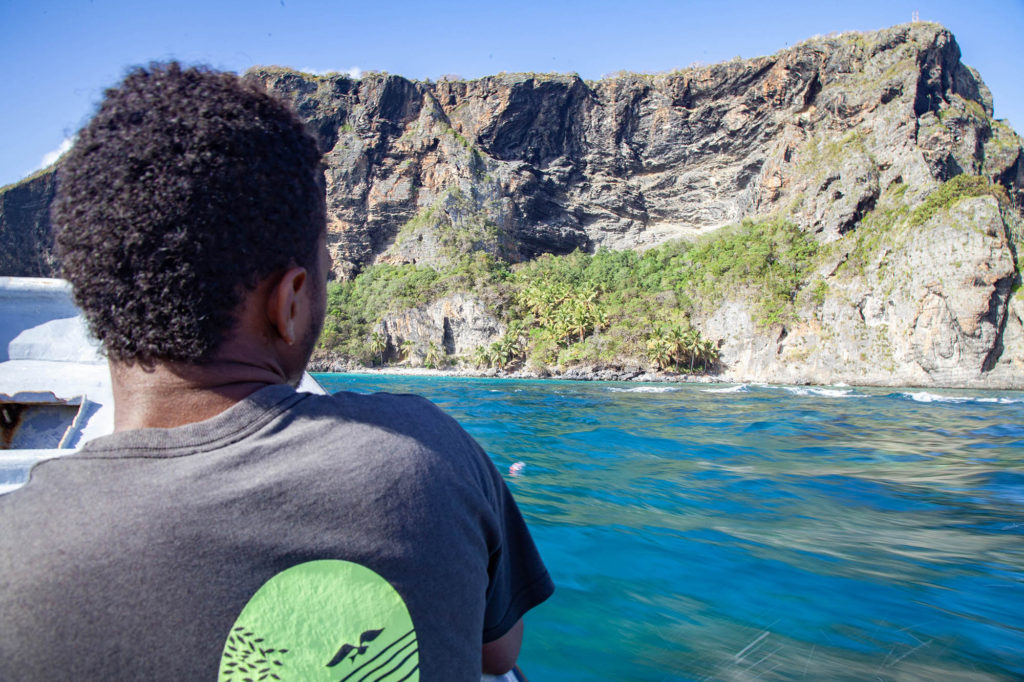
This is just the beginning of your adventure to Playa Fronton and Playa Madama.
But the thrilling speed boat ride isn't the only experience: there are caves with ancient artwork to explore while you're here.
As you make your way up Playa Fronton, you'll be in awe of the stunning views around you.
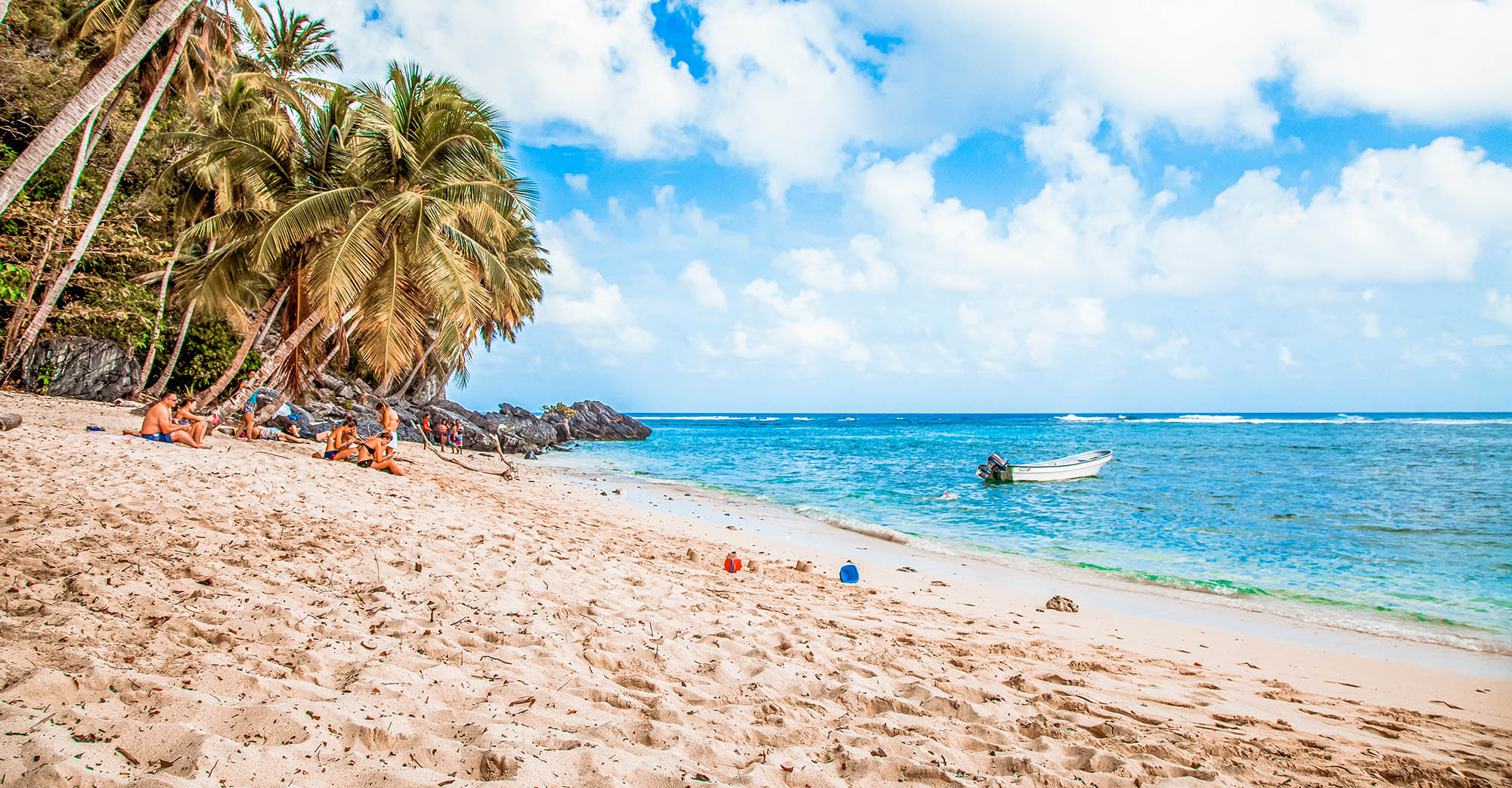
A muscular Dominican man emerges before you from the azure waters, adorned only in threadbare underwear with a knife tucked resourcefully beside his family jewels. The pescador has just caught your lunch using the same methods that have been passed down through generations.


A highlight of the trip is the food, caught fresh by the pescador, then cooked over hot coals. This is the kind of meal you won't forget.

Playa Fronton is a secluded beach paradise that took my breath away!
This one-day tour also includes a visit to Playa Madama, another stunning beach that's picture-perfect. With clear turquoise waters, it's the perfect place for swimming and snorkelling under the Caribbean sun.
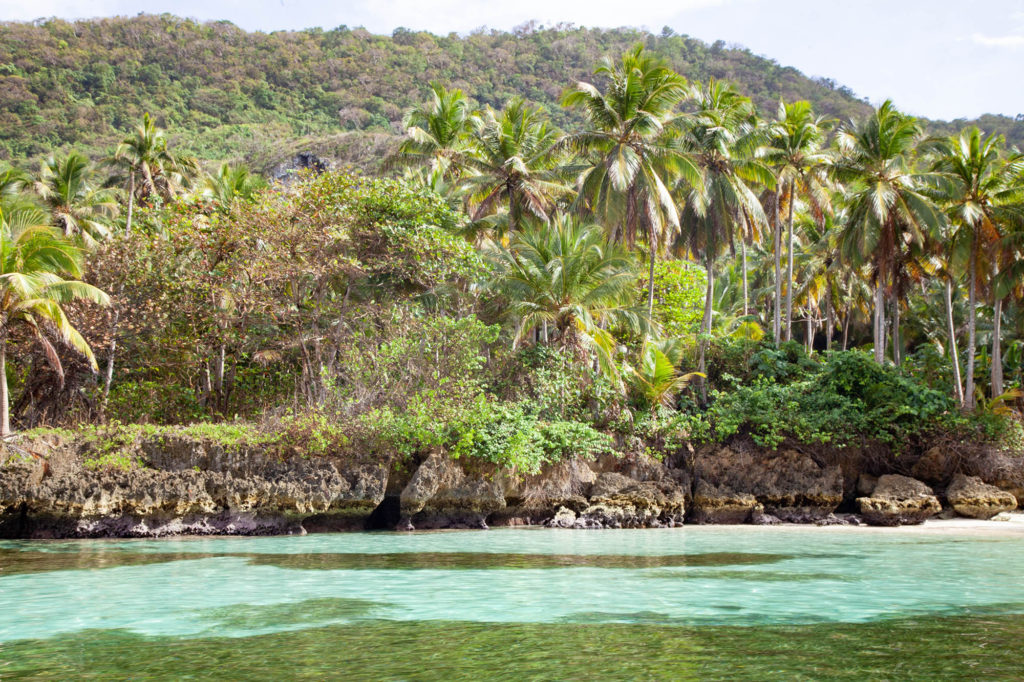
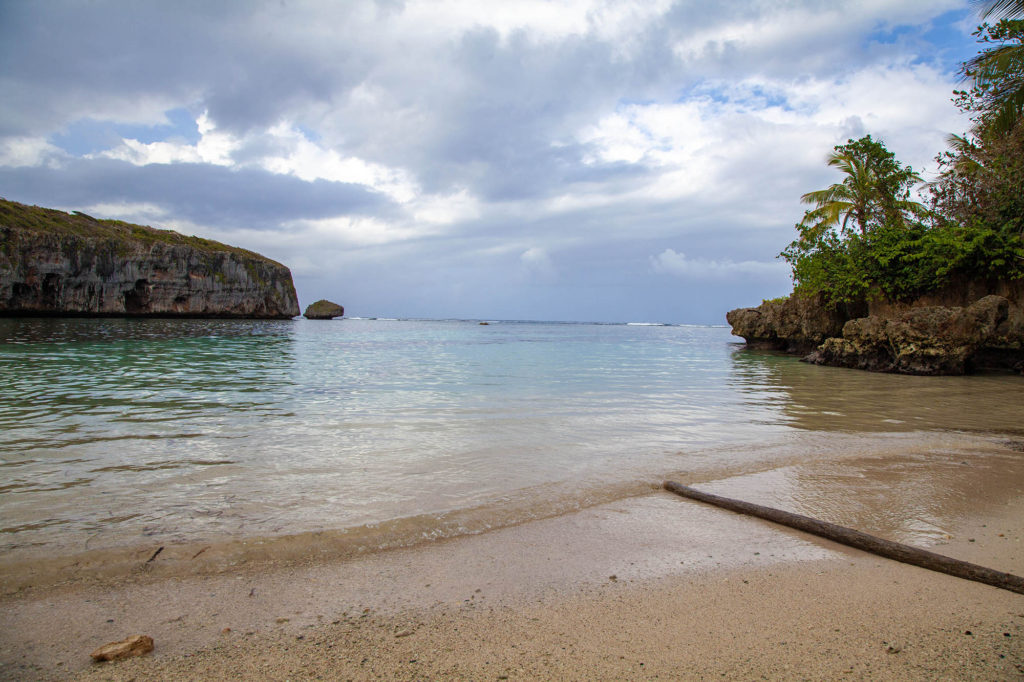
So, if you're looking for a unique and unforgettable adventure during your trip to this corner of the Dominican Republic, arrange a boat tour to Playa Fronton and Playa Madama (which we did on the shores of Las Galeras).
Playa Rincon
Hidden behind the winding dirt roads and lush jungle terrain of the Samaná Peninsula lies a secluded oasis. Playa Rincon, one of the Dominican Republic's best-kept secrets, boasts pristine white sand beaches and crystal-clear waters, perfect for a day of ultimate relaxation and adventure.
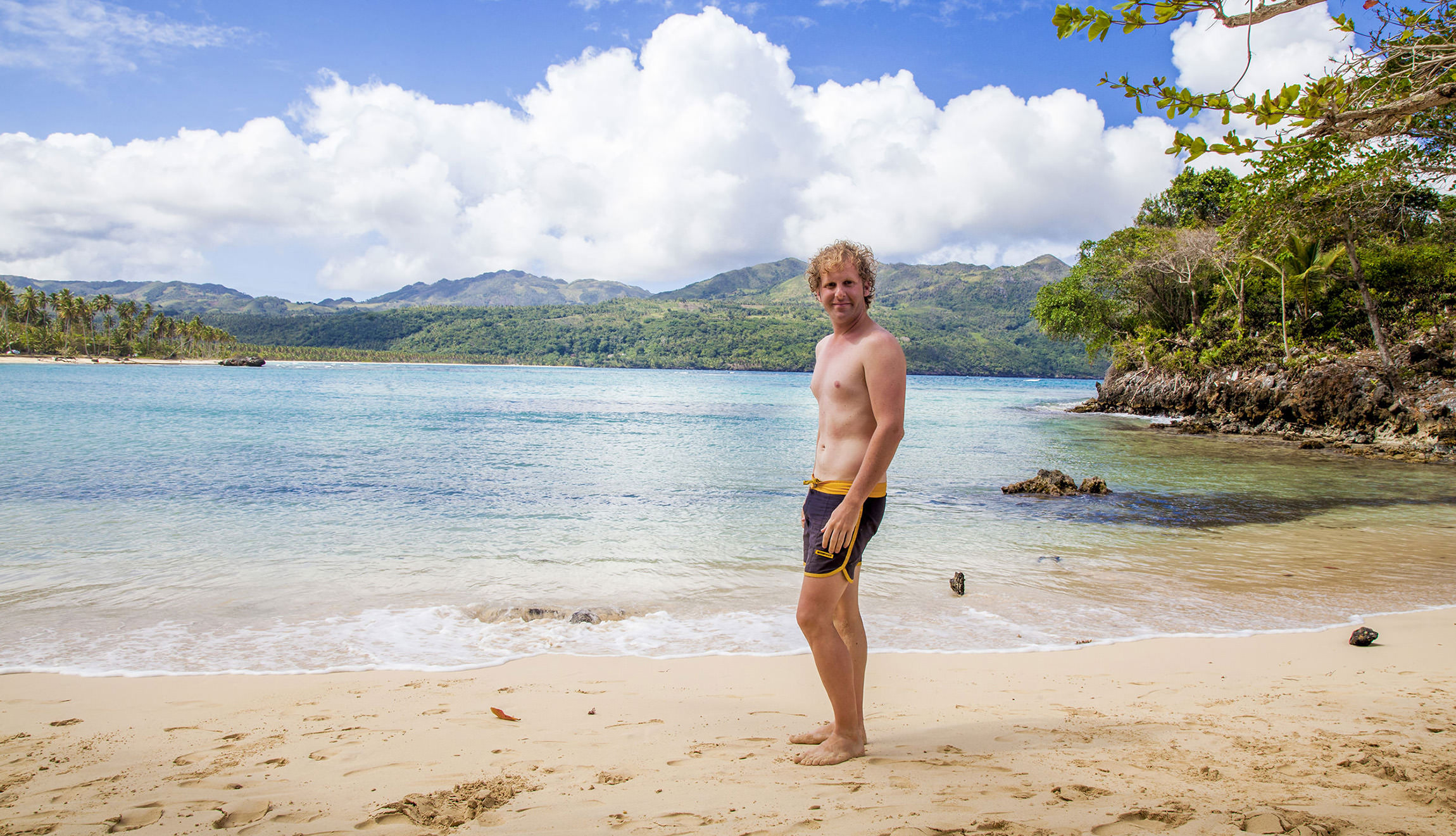
As you make your way along the beach, the scent of salty sea air fills your senses, and the sound of waves crashing against the shore beckons you forward. There's an endless expanse of soft sand and vivid turquoise stretching out before you, framed by towering palm trees.
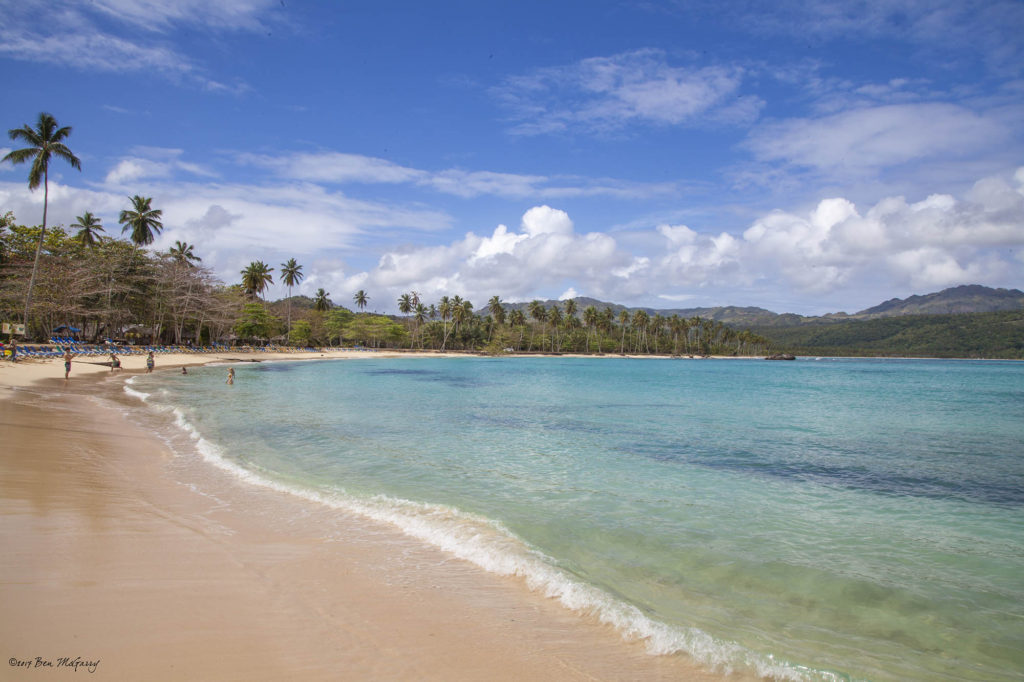

But Playa Rincon is more than just a pretty picture. The beach is also home to a lively fishing community, and you'll have the opportunity to sample fresh, locally caught seafood prepared in traditional Dominican style.
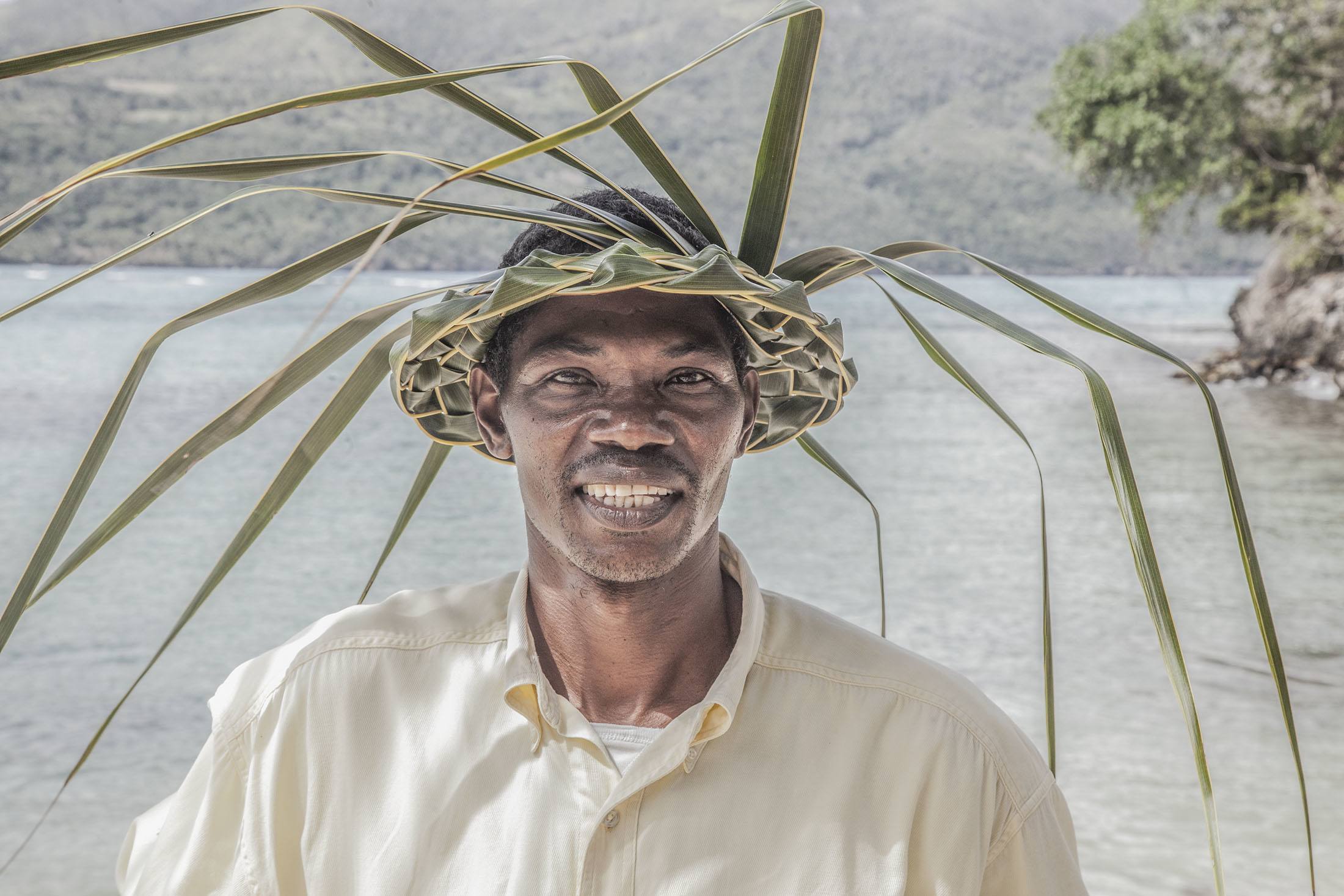
And if you're feeling adventurous, you can rent a kayak to explore the nearby coves.
Boat trips can be arranged in Las Galeras.
I thoroughly enjoyed my day swimming and snorkelling here.
Staying in Las Galeras - RECOMMENDED LENGTH OF STAY
Staying in Las Galeras - ACCOMMODATION
Eating in Las Galeras - RESTAURANTS
Getting around Las Galeras - TRANSPORTATION
Getting to Las Galeras - TRANSPORTATION
PUNTA CANA
Punta Cana, the crown jewel of the Dominican Republic's tourism industry, has an undeniable appeal that has lured millions of visitors to its shores over the years. With an array of all-inclusive resorts in addition to crystal-clear waters and powdery white sand beaches, it can be hard to resist.
It’s home to some of the most luxurious resorts in the Caribbean, with amenities including world-class golf courses, private beaches, and endless pools that seem to stretch out into infinity. However, the area has become synonymous with over-tourism, some critics arguing that it has become too developed and commercialised.
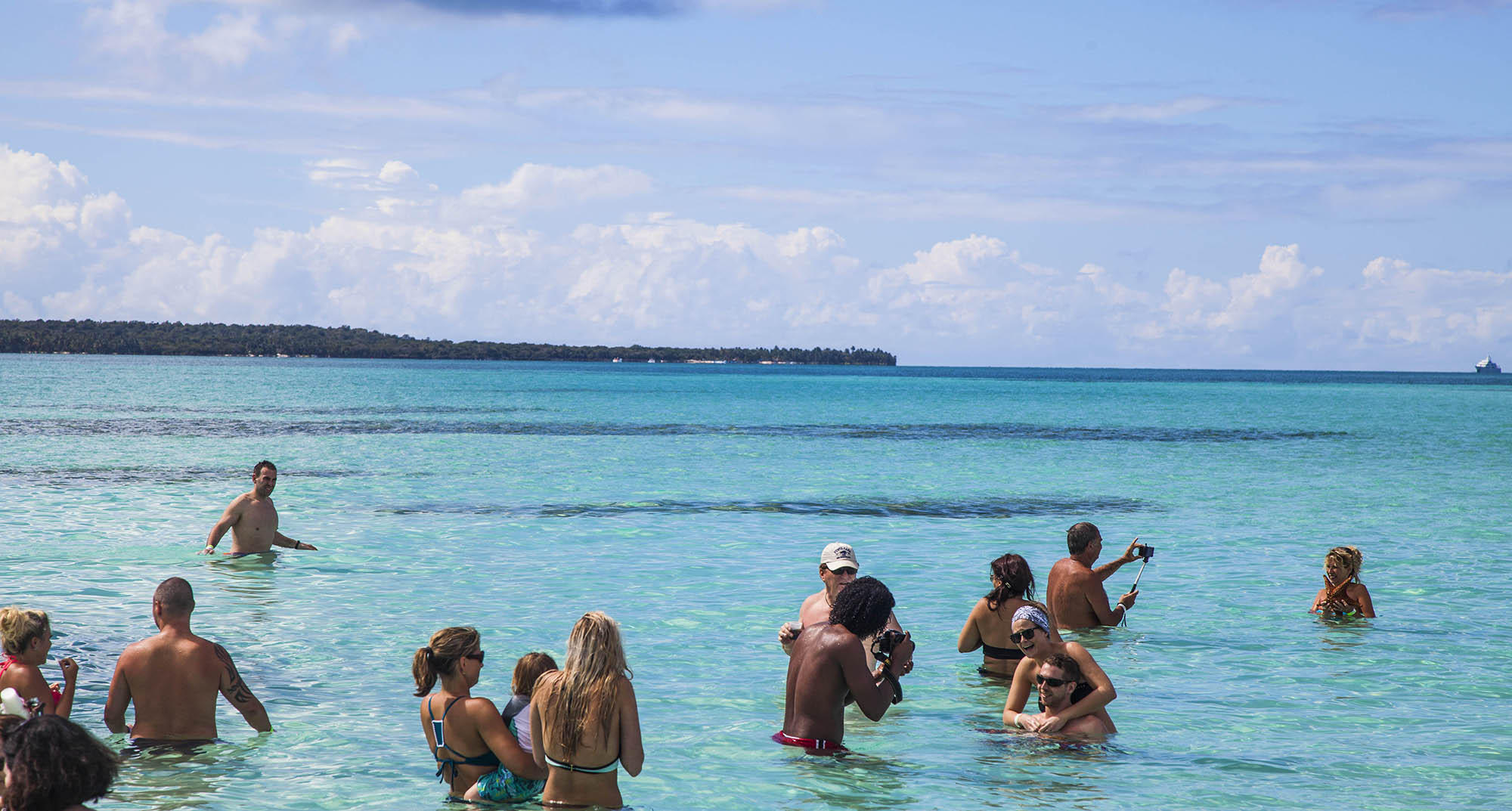
Despite the criticism, there's no denying the appeal of Punta Cana for those seeking a sun-soaked getaway. Spend time lounging on the beach, sipping cocktails, or participating in a variety of water-sport activities such as parasailing and jet skiing.
Foodies can indulge in a range of cuisines, from authentic Dominican dishes to international fare served at the many restaurants in the area (but prices tend to be high).
While Punta Cana may not be for everyone, it offers a unique vacation experience. If it’s amenities and comfort you’re after in tropical surrounds, then Punta Cana may be for you.
I wasn't too impressed by the hordes of people and tourists every which way I turned. But I did love the trip to Isla Saona.
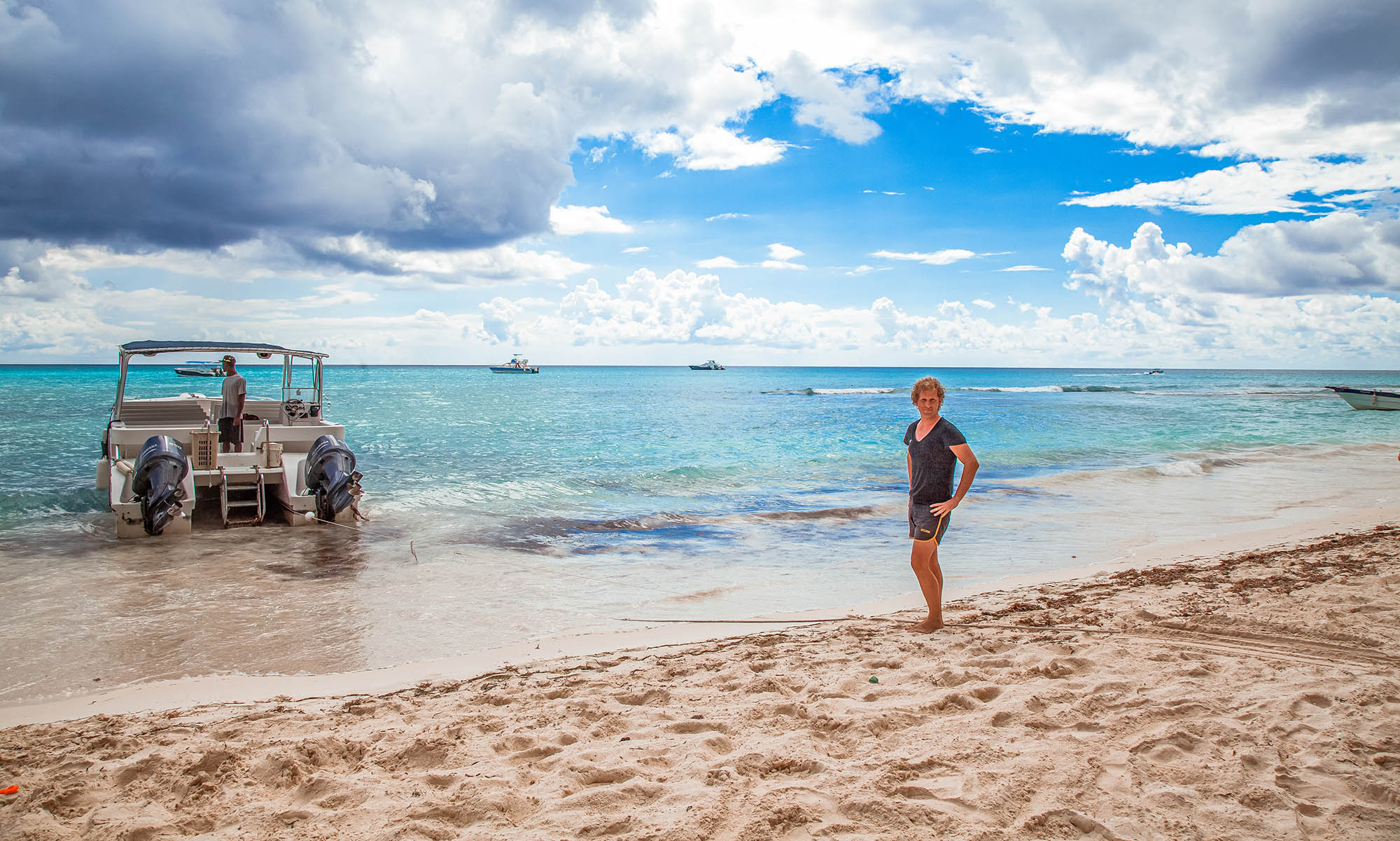
So, in the end, coming to this part of the country was worthwhile.
Playa Bavaro
This beach is the quintessential postcard image of the Caribbean, complete with swaying palm trees and endless sunshine. It's no wonder it's one of the most popular tourist destinations in the Dominican Republic.

Dotted with beach clubs and restaurants, you could easily spend the day lounging around, soaking up the sun, and taking a refreshing dip in the sea. The water is calm and perfect for swimming.
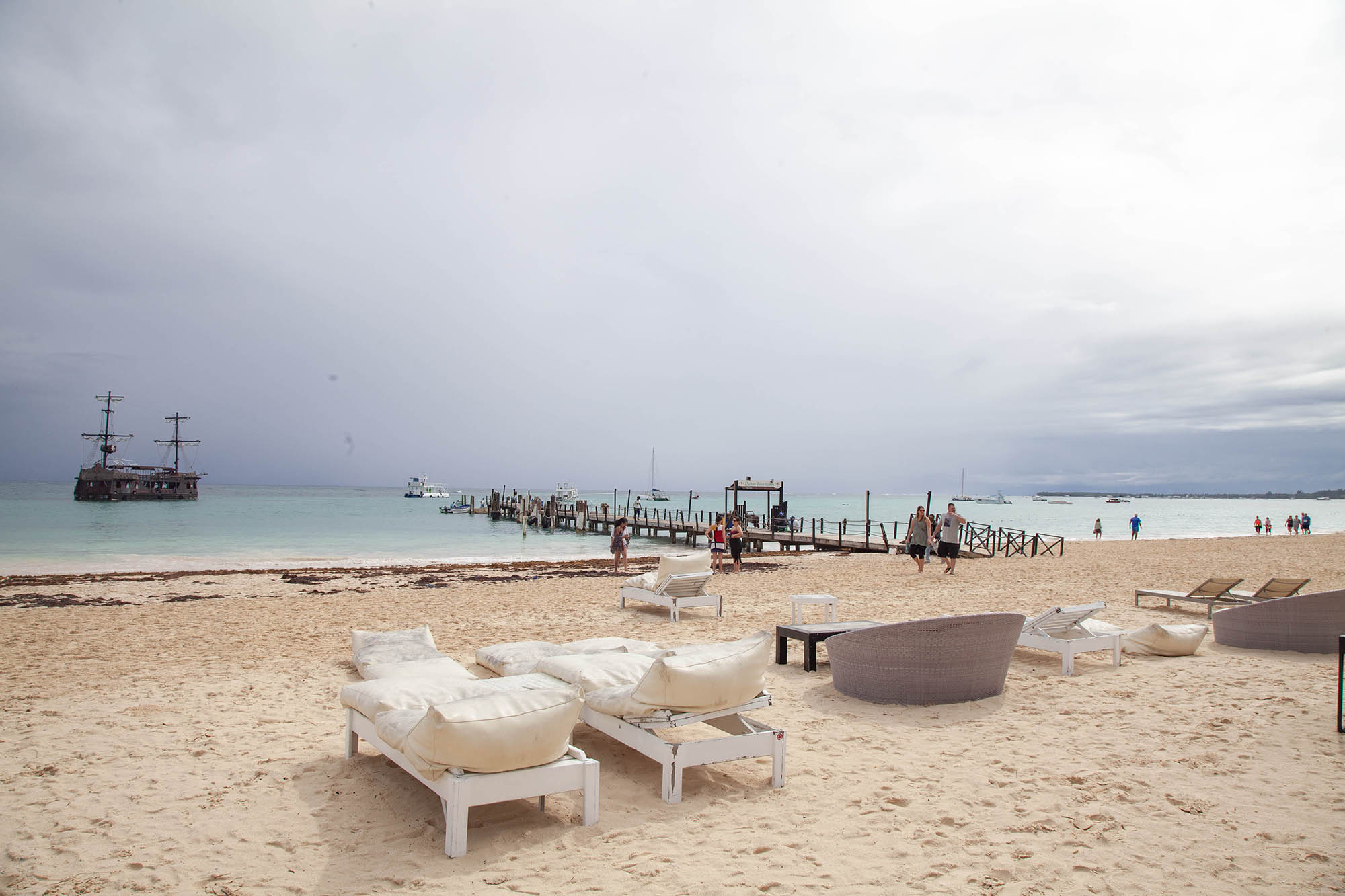
Although Playa Bavaro is a popular tourist destination, it didn't feel overly crowded (on the day we visited). The atmosphere is relaxed.
Isla Saona
Picture yourself in crystal clear waters, snorkelling with colourful fish for a full 15 minutes - the water is so clear, it feels like you can touch the sea floor. As if that's not enough, the catamaran moves a little to a place in which you stand waist-deep in turquoise water and become surrounded by starfish.
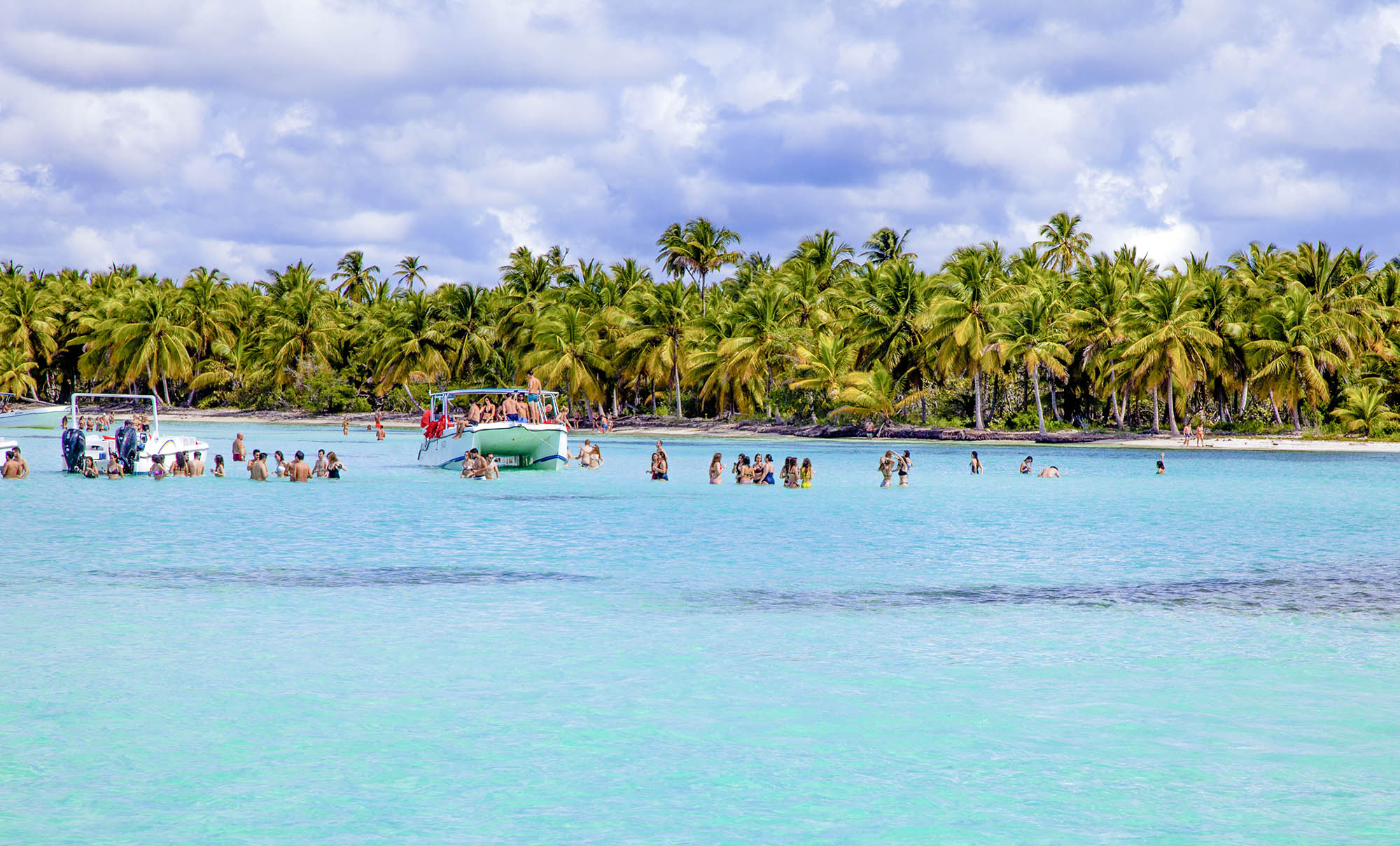
With music blaring, and the sun on your face, you feel like you're in a dream.
But the adventure doesn't end there. The boat goes to Isla Saona, which is home to only 800 inhabitants. The stunning beach is a sight to behold - it's like you've been transported to paradise.

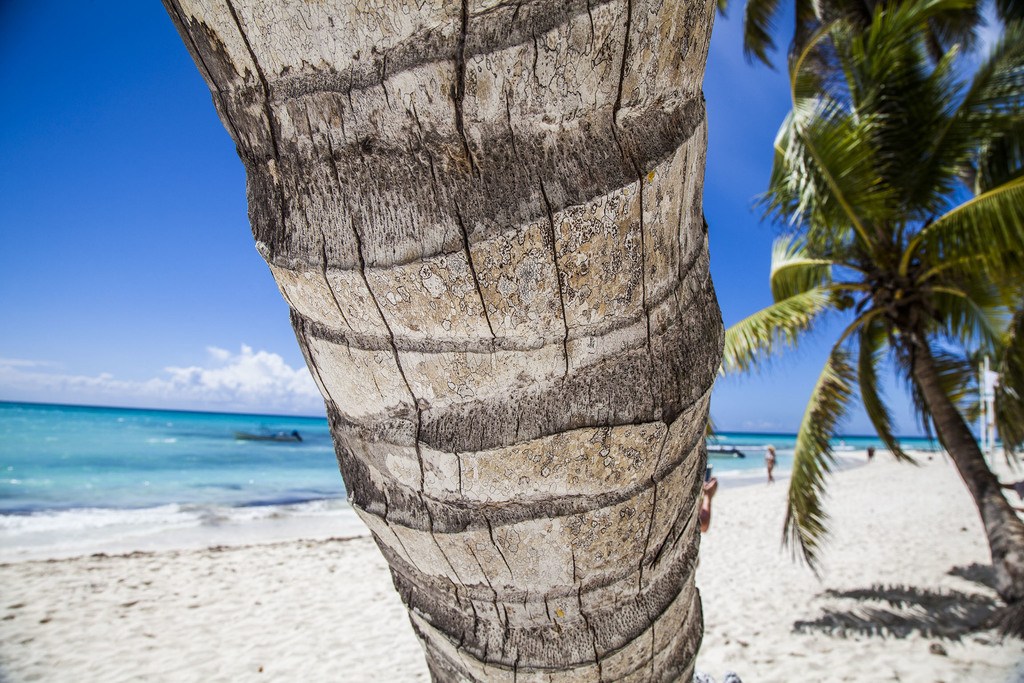
After swimming, resting under palms and having a drink, you indulge in a buffet lunch of local cuisine.
The day ends with a catamaran ride back to the mainland. There's dancing and there are drinks, with a backdrop of the slowly setting sun.
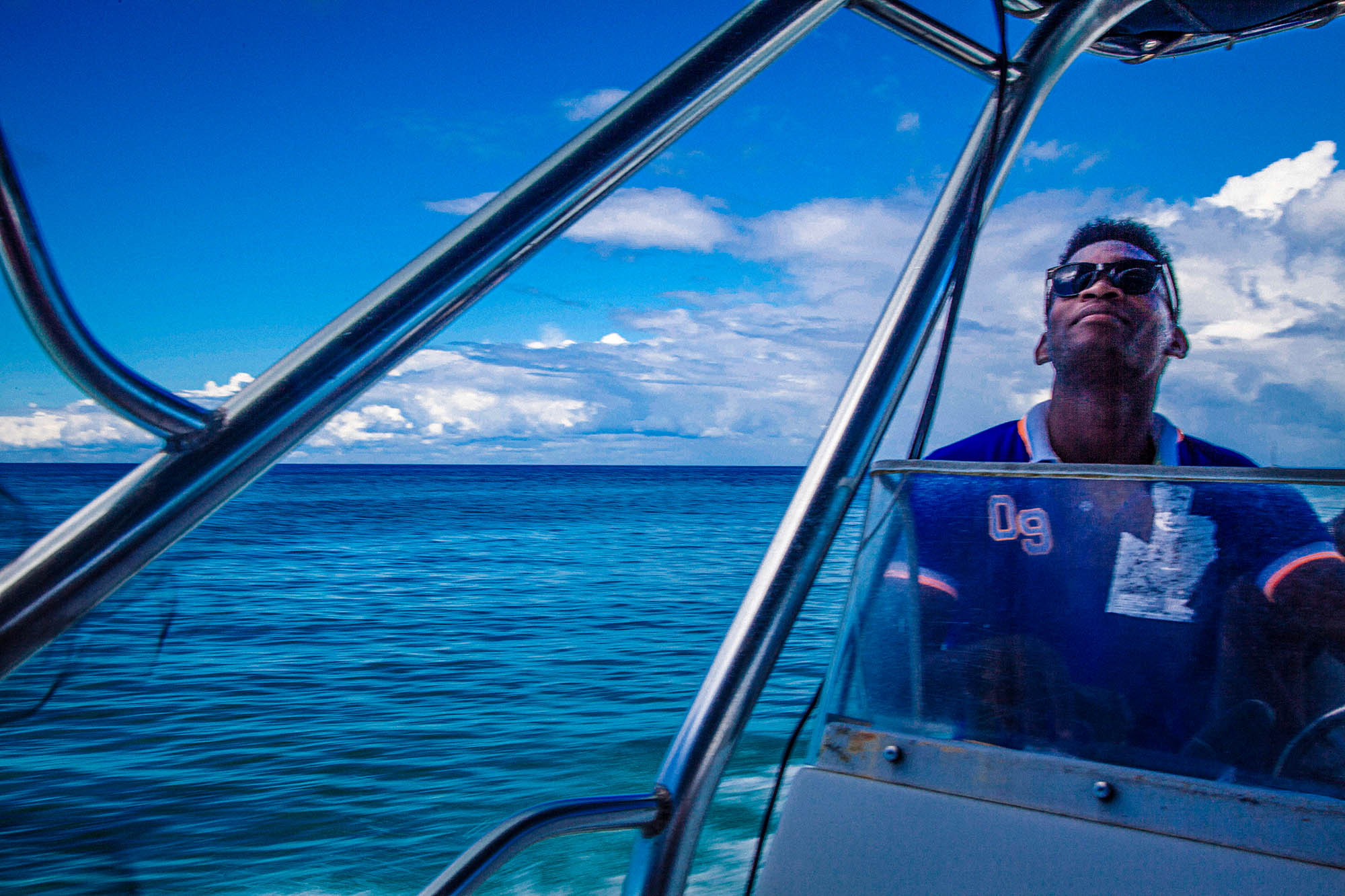
It was a remarkable trip, one I'll never forget.
Staying in Punta Cana - RECOMMENDED LENGTH OF STAY
Staying in Punta Cana - ACCOMMODATION
Eating in Punta Cana - RESTAURANTS
Getting around Punta Cana- TRANSPORTATION
Getting to Punta Cana - TRANSPORTATION
ITINERARY FOR VISITING THE DOMINICAN REPUBLIC - CONCLUSION
There you have the journey Sofia and I undertook in the Dominican Republic. I often find myself daydreaming about wandering along the powdery white sand beaches and snorkelling in turquoise waters.
It's a beautiful destination. Many parts of the island are postcard-perfect.
It's a wonderful destination to travel but I'd encourage you to consider spending more than 10 days here - it simply wasn't enough.
ITINERARY FOR VISITING THE DOMINICAN REPUBLIC - NOTE
There are inclusions and exclusions that can be completed to personalise the itinerary, depending on personal preferences.
It can be done within the timeframes suggested but it would be ideal to slow it down. I wouldn't recommend rushing through in less than 10 days.
But everything depends on you, your budget, preferences and time constraints.
Please feel free to contact me regarding anything you’ve read in this article and share your experiences of travelling in the DR below in the comments section.
Happy travels!

